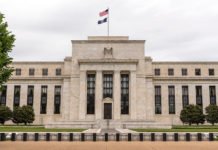Q4: +2.0%, equipment +0.7% (as anticipated). 2019/20: $92bn, Est 1 on Est 1 is +11% but implies a rise of only 1% we estimate.
December quarter
Total private business capex spending in Q4 was stronger than anticipated, up 2.0% (market median 1.0% and Westpac flat)
Building & structures provided the surprise, +3.2%. We expected a fall of around 0.5% and the Construction Work survey (which we feed into our GDP forecast) was a -0.9%.
Equipment spending met our expectations, +0.7% (expected +0.8%).
By industry, mining capex -4.3%; services +5.6%; and manufacturing -4.4%.
2018/19 capex plans
Est 5 is $118.4bn, +3.6% vs Est 5 a year ago.
This implies that capex spend in 2018/19 will be around 3% above that in 2017/18 ~ we calculate, based on average realisation ratios (RRs).
This is in line with the previous survey. Recall that Est 4 was $114bn, some 4.4% above Est 4 a year ago – a figure which implied a 3.4% rise in capex in 2018/19, we estimate.
By industry, Est 5 on Est 5 is: mining -7%; services is +9% and manufacturing +5%.
Based on avg RRs, Est 5 implies by industry: mining -8%; services 8.4%; manufacturing, 5%.
2019/20 capex plans
Est 1 is $92.1bn, +11% vs Est 1 a year ago.
This implies that capex spend in 2019/20 will be 1% above that in 2018/19 ~ we calculate, based on average realisation ratios (RRs).
By industry, Est 1 on Est 1 is: mining +21%; services is +7% and manufacturing +5%.
Based on avg RRs, Est 1 implies by industry: mining +5%; services flat; manufacturing, -9.5%.
Comments
For Q2, the equipment result was as anticipated.
Our forecast for Q4 GDP has been downgraded, to 0.2%qtr, 2.4%yr.
Previously, we were expecting 0.5%qtr, 2.7%yr. Construction activity fell by 3.1% in the quarter, a material downside surprise, as revealed in the Construction Work survey yesterday.
For 2018/19, the capex survey is relatively positive around investment by the service sectors. This is not a great surprise, with strength in transport (spill-overs from the upswing in public infrastructure) and strength in utilities (as investment in renewables increases sharply).
Mining investment in 2018/19 is likely to be below that in 2017/18, with construction of the major gas projects finalised recently.
Turning to 2019/20, we caution that estimates 1 and 2 for any given year can be an unreliable guide to actual spending – the error varies from year to year. This is particularly true for equipment spending – for which decisions / variations can be made with relatively short notice.
Estimate 1 for 2019/20 is $92bn, which is 11% above Est 1 a year ago.
This headline figure, Est 1 on Est 1, appears to be quite positive.
However, we assess that this figure is flattered by base effects – with Est 1 of a year ago relatively weak (compared with the likely outcome for the 2018/19 year).
We interpret the Est 1 reading as describing a much less upbeat outlook than suggested by the headline figure.
Est 1 implies that capex spending in 2019/20 will be 1% above that in 2018/19, we estimate.
Mining investment is now likely to rise, for the first time in a number of years – the investment wind-down is complete and investment in iron ore is moving higher encouraged by high prices and favourable profitability.
Of most interest is the view around the service sectors. Here the capex survey provides some mixed signals. The Est 1 on Est 1 is positive at +7%. However, as discussed above, we see this as flattered by base effects.
We estimate that Est 1 for services implies a flat result for 2019/20 – highlighting the uncertainty around the investment outlook across the broader economy.
By way of context, in the mid-year budget update, the Government forecast real business investment to rise by 5% in 2019/20, including a 5% rise in non-mining investment.
We anticipate a rise which is more muted, forecasting an increase of around 1.5%. This reflects our less upbeat view on the consumer and housing, as well as anticipate headwind associated with the Federal election, due by May – in short, heightened uncertainty may see firms delay their spending.
The capex also provides further detail around investment plans by plans by asset and by industry, which we will review.













